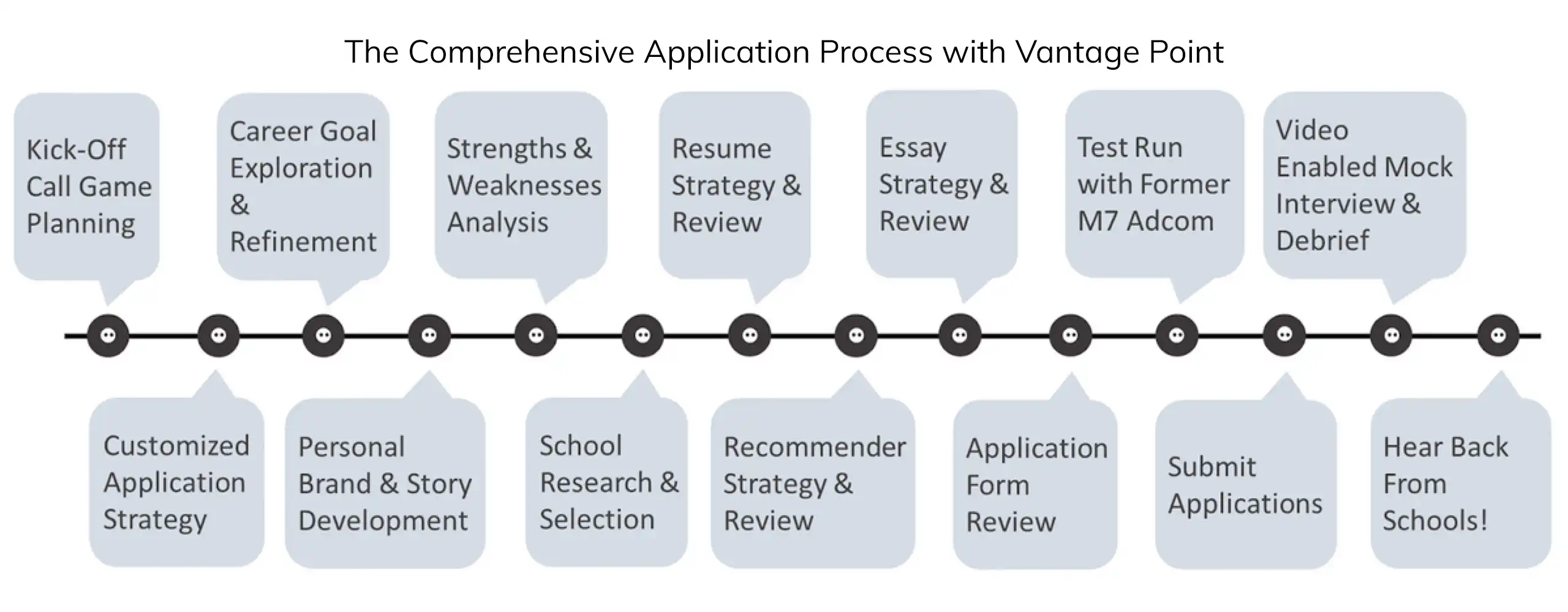MBA Application FAQs
Being a week or so out from many Round 2 MBA application deadlines, we’re fielding a lot of questions from our clients on how to fill out the actual ‘application’, otherwise known as the application data form. It’s easy to stress that your answers won’t be ‘right’ or will negatively impact your chances of admission in some way. Rest assured, they most likely won’t. But, to serve as a quick resource as you’re working through your applications, today we’re sharing a list of MBA application FAQs and our thoughts on each.
In our experience, the top five MBA application FAQs are as follows:
#1 – Should I submit more than one test score?
Some schools allow you to submit two GMAT or GRE scores from multiple attempts. At the end of the day, they’ll mostly rely on your best score to assess your candidacy. However, in our experience, the adcom likes to see that applicants, particularly those with scores lower than their class average, have attempted the test more than once. So, our advice is to include multiple scores if you are allowed to do so.
#2 – When asked for a job description or key accomplishments, should I just copy and paste from my resume?
We hear you, copying and pasting from your resume seems both easy and logical. You’ve already spent a lot of time coming up with the perfect wording to describe what you’ve done, right? While not a dealbreaker, to us this comes across as a tad lazy.
We advise clients to take the descriptions from their resume and adjust them to a more conversational, sentence-based format. Layperson’s terms are key. Think about how you would describe your work to your partner’s parents who are familiar with business in general but not your specific company, industry, function, etc. This is the way you should describe it in your applications. Not only will this help the adcom ‘get’ what you do, but it also showcases that you can communicate something complex in a clear and simple way.
#3 – The application asks for details about my family background, cultural identity, etc. but I do not view myself as a particularly diverse candidate. How do I answer?
As we’re sure you are aware, cultivating a diverse class is top of mind for business schools. This enriches the experience for all and works towards building diversity into the management ranks of post-MBA employers, amongst a number of other equally important reasons. That said, diversity as a concept is much broader than the set of reportable categories you see in MBA class profiles.
We would urge you to share something here, as opposed to leaving it blank. If you dig deep enough, virtually everyone has something unique about the way they were raised that has influenced who they are today. Maybe you are a twin, were raised in a family of doctors, or spent your summers traveling to visit family in eastern Europe – these can all be relevant to the perspective you would bring to campus.
#4 – How many ‘activities’ should I list and what fits the bill here? Relatedly, some applications cap activities at a certain number, how do I prioritize?
Generally speaking, schools ask this question because they want to see: i) how you spend your time outside of work and ii) how you’ve contributed to communities of which you are a part in the past. At the end of the day, they want their student body to be curious and interesting. Most schools also depend on student-led clubs to enrich the experience of their students, help prepare them for recruiting, etc.
When choosing what to include here, to a certain extent, we’d recommend you trust your gut. What activities ‘feel’ most significant or meaningful to you? Oftentimes these also happen to be involvements that are aligned with your personal brand so will help to reinforce the picture you present of yourself elsewhere in the application.
Aside from that, err on the side of including organizations where you had a formal or informal leadership role and are somewhat recent. If you want to include something from college, that’s fine but balance it with another activity or two from present day. Same goes for hobbies – these are great to show you are an interesting person, but balance them with things that require teamwork, collaboration, etc.
If the application allows for an open-ended number of activities, our advice is to target three to five unless it would be a stretch to do so or, on the flip side, you really can’t leave out a sixth.
#5 – How do I answer the ‘reason for leaving’ questions in the Employment section of the application?
We’ll address this in two parts – how to answer why you left past jobs and how to handle this question as it pertains to your current job.
For past jobs, we sometimes see clients focus on the negatives or frustrations they had while at a prior company (toxic work culture, unsupportive management, etc.). While this may be accurate, we suggest you focus on the positives you saw on the horizon at the company you joined upon leaving. This can be a great opportunity to tell more of a story about your career path and share the logic that went into your decision.
For your current role, it seems logical to simply say ‘N/A’ since you’re still there, right? Yes, but we’d recommend that, instead, you use this field as a place to reinforce your ‘why MBA’ messaging. In our opinion, this comes across as more thoughtful and thorough.
We hope you’ve found our answers to these MBA application FAQs helpful! Here are a few other articles that may be of interest as you wrap up your Round 2 MBA applications:
Thanking Your Business School Recommenders – Vantage Point MBA
How to Tackle Kellogg’s Video Essays – Vantage Point MBA
MBA Application Checklist | Vantage Point MBA





Pingback: Successfully Navigating a Job Change While Applying to Business School | Vantage Point MBA
March 22, 2024 3:32 pm